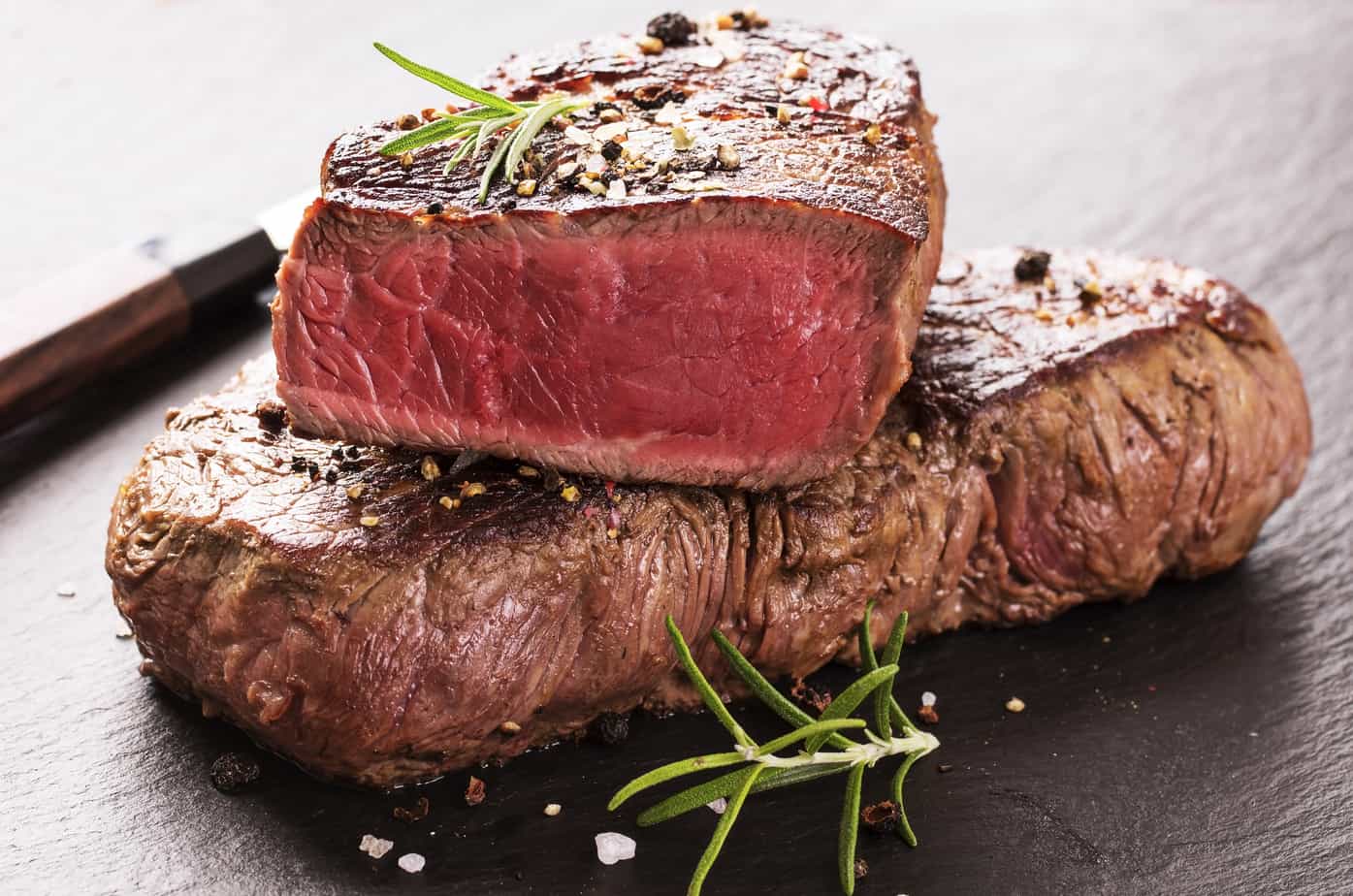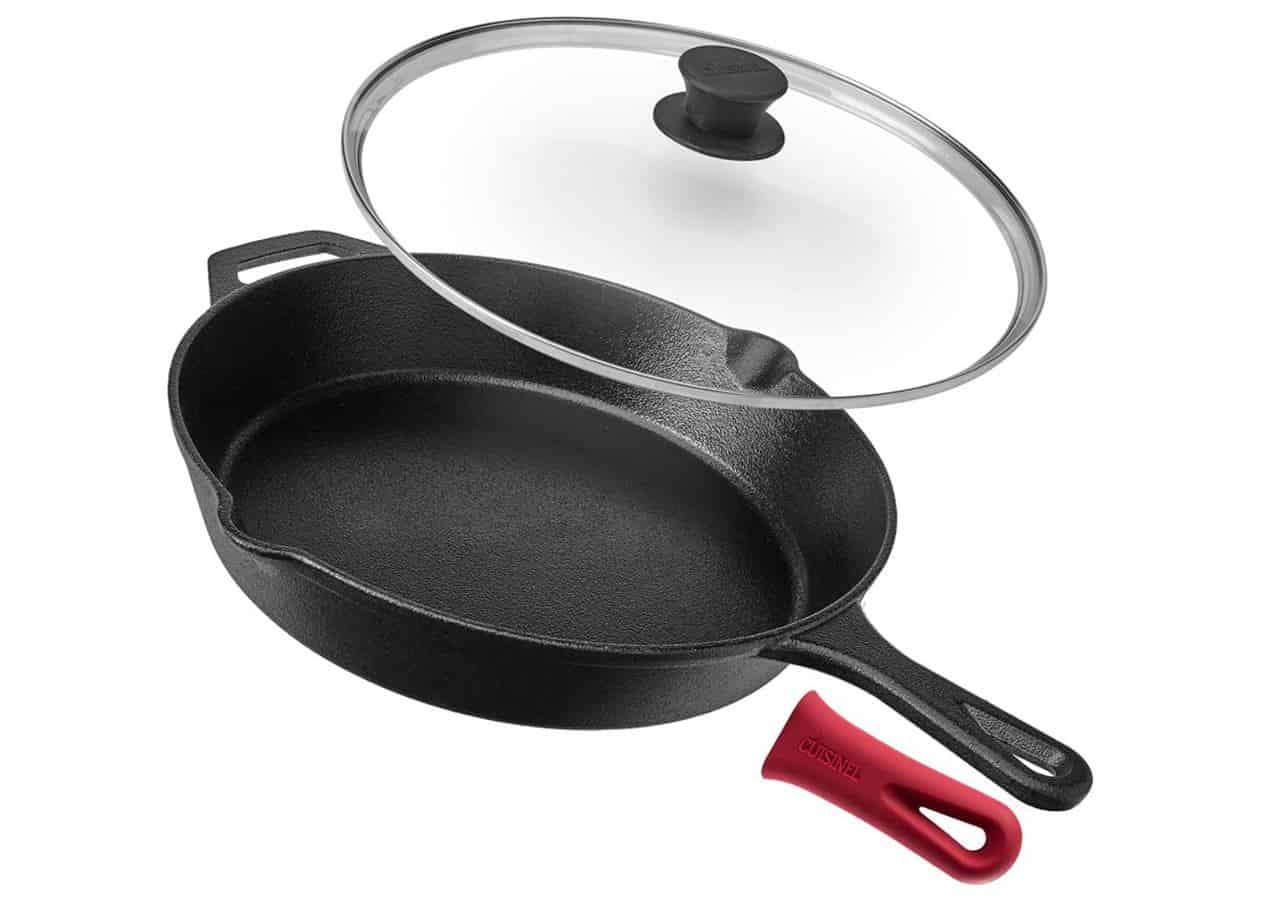How To Cook Steak Perfectly Every Single Time
Learn how to cook steak perfectly every time, and say goodbye to improperly cooked steaks!

What's In This Article?
- What's In This Article?
- How Do I Choose The Right Cut of Steak?
- The Filet Mignon:
- The T Bone or Porterhouse Steak:
- What is the difference between the T Bone and Porterhouse Steak?
- The Ribeye Steak:
- The Hanger Steak
- The New York Strip Steak
- Should I Buy Boneless or Bone-In Steak?
- What Grade of Beef Should I Buy?
- How Do I Cook A Steak?
- How To Cook Steak:
- Cooking The Perfect Steak:
- Before You Begin Cooking:
- How To Cook The Perfect Steak:
- Ingredients You Will Need:
- Steak Cooking Directions:
- How to Slice and Serve Your Steak:
- Check out our other recipes, tips & tricks for Easy, Effortless Entertaining from AWG Private Chefs!
How Do I Choose The Right Cut of Steak?
Selecting the right cut of steak is always a personal choice depending on the texture and flavor profile that suits you best. Being a private chef, there are 5 primary cuts of steak that I am most commonly asked to prepare by our clientele.
The Filet Mignon:
What is a Filet Mignon?
The filet mignon comes from the small tip end of the beef tenderloin. It is one of the most tender cuts of beef. Filet mignons are generally more on the expensive side, and quite lean, and don't contain a lot of fat or gristle.
The T Bone or Porterhouse Steak:
What is a T Bone or Porterhouse?
The T Bone or Porterhouse steaks are one of my most favorite steaks to prepare. I think that they have the perfect balance of meat to fat ratio to create that delicious signature beefiness that everyone loves, plus in essence, you get two different steaks in one.
These two cuts of meat come from the short loin, contain a T-Shaped bone that runs through the middle of the steak. On either side of the bone reside the strip loin or the tenderloin.
What is the difference between the T Bone and Porterhouse Steak?
T-Bone steaks are cut from the front end of the animal and have a smaller tenderloin. The Porterhouse steaks are cut from the back of the animal and have a larger tenderloin attached.

The Ribeye Steak:
What is a Ribeye Steak?
A Ribeye steak contained a generous amount of marbling (fat) throughout the steak that melts beautifully in the mouth, stays tender when cooked rapidly at high temperatures. The Ribeye steak comes from the rib area of the animal between ribs six through twelve.
Not all of the fat will render out when cooking, so if chewing through or cutting away meat fat isn't your cup of tea, you might want to select an alternate cut of beef, such as the New York Strip steak.
The Hanger Steak
What is a Hanger or Butcher's Steak?
The hanger steak is an elusive cut of steak that may be more difficult to find but is definitely worth the hunt. This super tender and intensely beefy flavored cut of meat hangs off the diaphragm in the lower belly of the animal.
Also known as the Butcher's Steak, or the Butcher's Secret Steak, only one hanger steak exists per cow, whereas with most other cuts of steak there are multiple steaks per animal. Due to the highly concentrated beef flavor and extreme tenderness of the hanger steak, a simple seasoning of just salt or pepper is all that is needed.
The New York Strip Steak
What is a New York Strip Steak?
The New York or New York Strip Steak is cut from the short loin area of the animal. It is a lean cut of steak that has a bit more chewiness. It's the strip loin side of the Porterhouse steak and is only served boneless.

Should I Buy Boneless or Bone-In Steak?
The biggest "bone of contention" between consumers and chefs alike is the age-old debate of should I buy bone-in or boneless steaks. While not all cuts of steaks are offered with the bone, for those that are, I always suggest going bone-in when it's an option.
While they do take longer to cook, having the bone-in gives you additional flavor enhancement from the bone marrow which comes out during the cooking process and then reincorporates itself into the meat for added flavor. Bone-in steak can help aid in the prevention of inadvertent overcooking of your steak due to the insulative properties of the bone.
What Grade of Beef Should I Buy?
What do the different grades of beef mean?
There are 4 primary grades of beef most often found in stores here in the United States. According to the USDA beef grading shield matrices, they are Ungraded, Standard or Non-Specified, Select, Choice, and Prime.
Ungraded, standard or non-specified beef is the lowest quality and will often be the cheapest in price. This is commodity grade or mass-produced beef and should be avoided under all circumstances as this is the minimum grade determined that is edible by humans by the USDA.
Select grade of beef is generally what is put on the market at an attractively advertised lower price. Select beef is generally regarded as "not that great, but not that bad either", it hits slightly higher quality and price points over the ungraded or standard beef.
Choice grade beef is the middle of the road both in quality and price point. Choice beef is higher quality than select, and much higher quality than ungraded, standard.
Prime grade beef is of the highest rated quality by the USDA and comes in at the highest price tag as well. Prime grade is our choice for the beef we serve our clientele.

How Do I Cook A Steak?
How To Cook Steak:
What Doneness Temperature Should I Cook A Steak To?
They say beauty is in the eye of the beholder, and as such, steak doneness is also of the same ilk. As a chef, the standard doneness temperature that I prefer to serve a steak at to my guests is medium-rare.
Important Note: The temperatures discussed below are the temperature that you should remove the steak from the heat, allowing it to rest tented with aluminum foil for a full 10 minutes prior to cutting into it.
Rare:
A steak cooked to 120 degrees F is rare. The steak is warm on the outside and cooler in the middle, very soft to the touch, and has a very red, shiny, nearly raw appearance when sliced.
Medium-Rare:
A steak cooked to 130 degrees F is medium-rare. The steak is just warmed throughout, soft to the touch with just a bit of resistance, and has a red to deep pink appearance when sliced.
Medium:
A steak cooked to 135 degrees F is medium. The steak is warmed all the way, is slightly firmer to the touch, and has a nice blush of pink in the center when sliced.
Medium-Well:
A steak cooked to 140 degrees F is medium-well. The steak is cooked through all the way, firm with just a slight amount of resistance when touched, and has just a tiny amount of remaining pink in the center while the rest is grey, and is beginning to dry out.
Well Done:
A well-done steak is cooked to 150 degrees F. The steak is grey all of the way through, incredibly firm to the touch, and is grey with no residual pink, and very little to virtually no moisture at all.
Cooking The Perfect Steak:
Equipment Needed For Cooking Steak:
There are really only two pieces of essential must-have equipment you need in your kitchen to prepare the perfect steak.
Having a reliable, and trusted instant-read digital meat thermometer is an absolute must when cooking. I exclusively use the Javelin Lavatools PT12 Instant Read Meat Thermometer as my everyday go-to thermometer in both my home and professional kitchens.
The second essential piece of equipment for the perfect steak is a Preseasoned Cast Iron Skillet of at least 10 or 12 inches in size. Cast iron pans provide the evenest heat distribution and retention, tolerate all high heat situations, and can go from stovetop to oven without worry.
Before You Begin Cooking:
Before you embark on preparing the perfect steak, there is a critical step that always must be followed. Remove the steaks from the refrigerator, discarding any packaging. Place the steaks on a plate or rimmed sheet pan, and let stand at room temperature for a full 60 minutes prior to cooking.
How To Cook The Perfect Steak:
So by now, you've chosen the best cut of steak for you, removed it from the packaging and allowed it to rest at room temperature for an hour, and have your trusty instant-read thermometer and cast iron pan.
Ingredients You Will Need:
- Steaks of a cut and quality of your choosing (at least 1" thick)
- Grapeseed or Sunflower Oil
- Freshly Ground Black Pepper
- Kosher Sea Salt
- 2-3 Tablespoons Unsalted Butter
- 3 Garlic Cloves (Peeled, lightly smashed)
Steak Cooking Directions:
- Preheat your oven to 400 degrees F conventional, or 375 degrees F convection.
- Preheat your cast-iron skillet over medium-high to high heat for at least 10 minutes.
- While the skillet is preheating, pat the steaks dry on all sides with paper towels.
- Generously season all sides of the steaks with kosher salt and black pepper.
- Once your skillet is smoking hot, place the steaks in the skillet, laying them away from you as they make contact with the pan.
- Don't move the meat! Sear the steaks over high heat for 2-3 minutes per side. Turning only once.
- Once the steaks have seared, toss the garlic in the pan, and spoon the unsalted butter over the top of the steaks.
- Place the skillet into the oven. Cook the steaks until 5 degrees prior to the desired doneness using your instant-read thermometer. For example, if you are looking for a medium-rare steak, remove the steaks from the oven at 125 degrees F.
- Remove the steaks from the cast iron skillet, and baste the steaks with the garlic butter.
- Cover with heavy-duty aluminum foil and let the steaks rest for a full 10 minutes. The steaks will continue cooking, adding the remaining 5 degrees and arriving at the perfect desired doneness temperature.

How to Slice and Serve Your Steak:
After your steak has rested in its foil tent for a full ten minutes, it's time to slice. Using a sharp knife, slice the steak across the grain to maximize tenderness. Transfer your steak to a warm plate, and top with a bit more of the garlic butter from the pan.
If you're looking for a great quick sauce for any steak, check out our recipe for Easy Red Wine Reduction Sauce.
Check out our other recipes, tips & tricks for Easy, Effortless Entertaining from AWG Private Chefs!
- How to Thaw, Prepare, Cook, and Carve the Perfect Turkey That's NEVER Dry!
- 10 Perfect Girls Night Out Planning Tips
- Micro Wedding Menu Planning Secrets
- 7 Reasons Why People are Hiring a Private Chef for Their Next Dinner Party
About the Author: Certified Master Chef, Sommelier & Wine Educator, Sean Andrade is the executive chef/owner of AWG Private Chefs, named the #1 Private Chef company in California. Chef Sean has worked in the restaurant and hospitality industries worldwide for more than 25 years. His company AWG Private Chefs offers highly custom-tailored, bespoke private chef dining experiences, and private event catering in over 30 countries around the globe.

